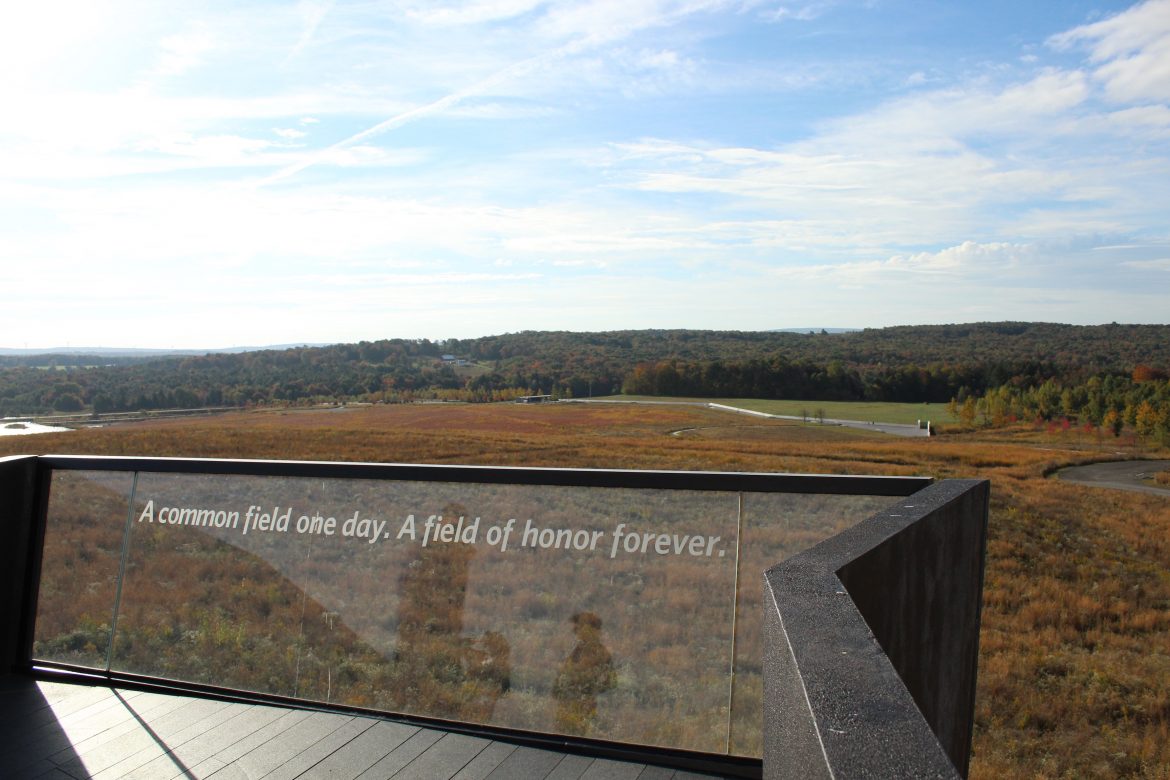
Image: Jack Nissen
By Jack Nissen
A little plot of Pennsylvania farmland was made famous when a plane crashed there on Sept. 11, 2001. It was one of the four doomed flights that went down that day.
Now called the Flight 93 National Memorial, it’s become a monument to the United Airlines passengers who perished there. While it’s described by the National Park Service as a place of mourning and relief for family and friends, it’s not just relatives doing the healing here.
Before Sept.11, the park was being restored to its original state after mining operations concluded in the early 1990s. But after the crash, Congress passed a bill that changed ownership of the land to the National Park Service.
That presented park service and several other agencies with a unique opportunity to finalize the restoration of the land while also experimenting with other tree species that hadn’t hit hard times in the past.
“The goal for the regional reforestation initiative is to mimic the white pine, red pine and red oak cover type,” said Scott Eggerud, a forester with the Office of Surface Mining Reclamation and Enforcement. “We try to mimic that cover type, and all the common associates including American chestnut and American elm.”
Tree species that symbolize a tragic past, and hopeful future.

The Flight 93 Memorial was established a little more than a year after the plane crash. Before the events of Sept. 11, it was the site of a closed mining operation. Image: Jack Nissen
American elm, a sturdy tree that wears a drooping crown of foliage in the shape of a vase, saw its populations rapidly decline by 75 percent after the arrival of Dutch elm disease in 1928. American chestnut suffered an even worse fate as it teetered on the edge of extinction after chestnut blight unintentionally found its way into the United States in 1904.
Since their populations bottomed out, there’s been a renewed interest in both species due to them growing a resistance to the diseases that had plagued them in the past.
“Most of our elms are smaller and continue to get killed off when they get to a larger size,” said Kathleen Knight, a research ecologist with the U.S. Forest Service. “People have been working a long time to be able to breed an American elm that is resistant to the disease.”
It’s rare to find an American elm in the wild anymore, and even rarer to find one with the genetic mutation that withstands the disease.
Knight says eradicating Dutch elm disease isn’t a viable option, therefore the goal has been to identify American elms that have grown with a resistance to the disease. The disease-resistant species is then crossed with other American elms. This breeds more of the same species that carry that same mutation–a necessity not just for the species, but for forests in general.
“As our forests are being threatened by more invasive insects and diseases, we need to maintain the diversity of our forests in order for them to have resilience,” Knight said. Its resurgence also means more habitats homes for other animals.

400 bald and burlap White pines were planted North of the memorial as wind breakers, as well as to provide a pleasant backdrop. Image: Jack Nissen
It’s going to be a long time before these trees reach their pre-1928 numbers, but officials have an idea for how long it’ll take.
“Within the next five to six years, we will have some seed orchards with some number of surviving trees in them,” she said. “Within a decade, we will have a very large number of survivor trees that would become available for people to plant.”
More than 350 American elms have been planted within Flight 93 National Park. The success of reintroducing the species is dwarfed by the memorial park’s number of American chestnuts: almost 6,000 planted within the park’s boundaries.
A blight-resistant American chestnut has one-sixteenth of Chinese chestnut in it. That way, as Eggerud puts it, the tree has the form and function of an American chestnut, but the disease-resistance of a Chinese chestnut.

A mixture of red oak, scarlet oak and red maple line a 1.7-mile walking loop that leads to the crash site. Image: Jack Nissen
“We’ve done several of these projects,” Eggerud said. “We’ve done close to 300 of these projects with public and private partnerships.” He calls it a restoration experiment happening in real time.
The chestnut’s resurgence parallels much of the progress made by other forest natives within the 1,000 acre park. Since reclamation started less than 20 years ago, close to 100,000 trees have been planted, about two-thirds of the park’s goal, which officials expect to reach by 2020.
